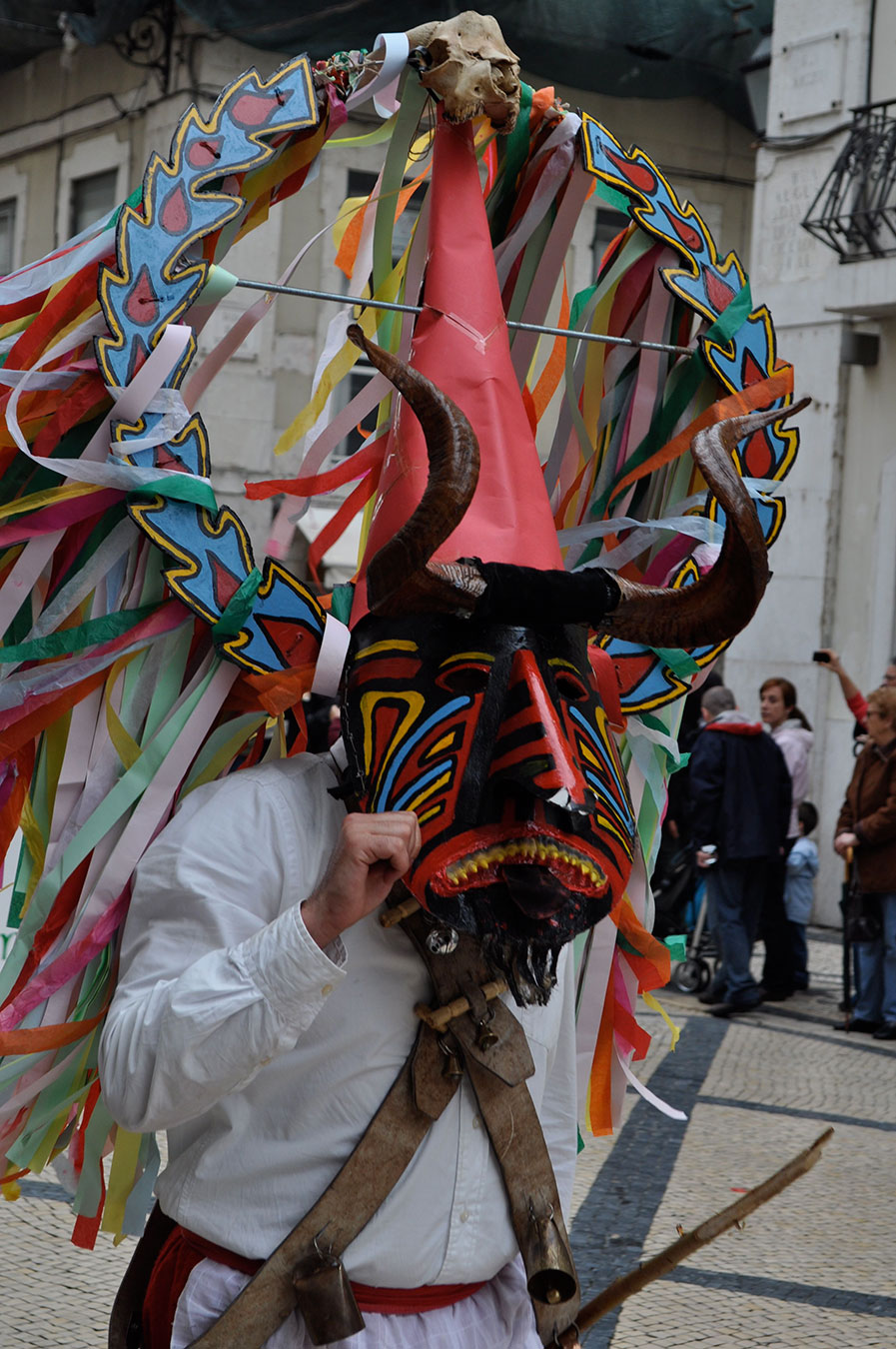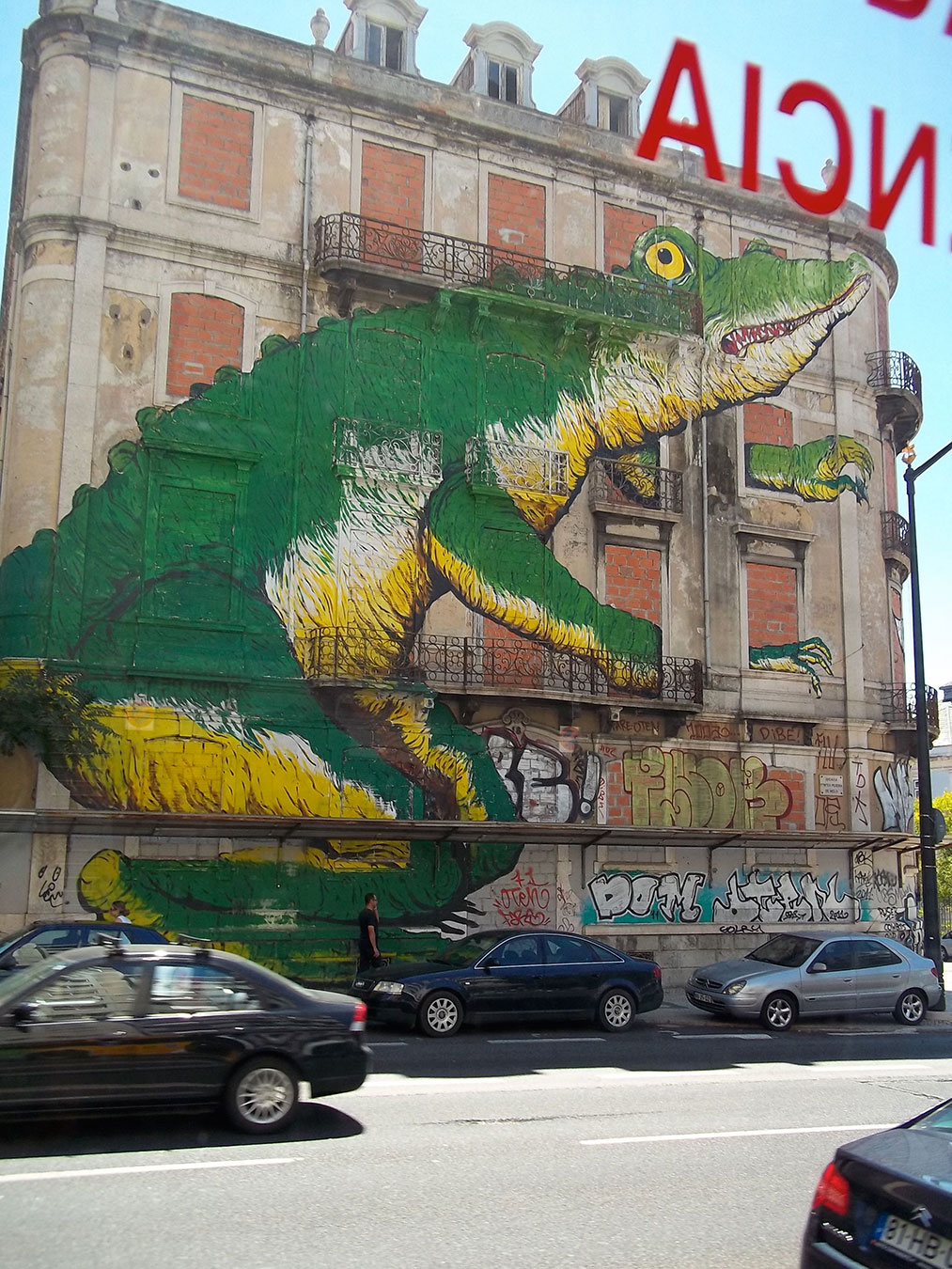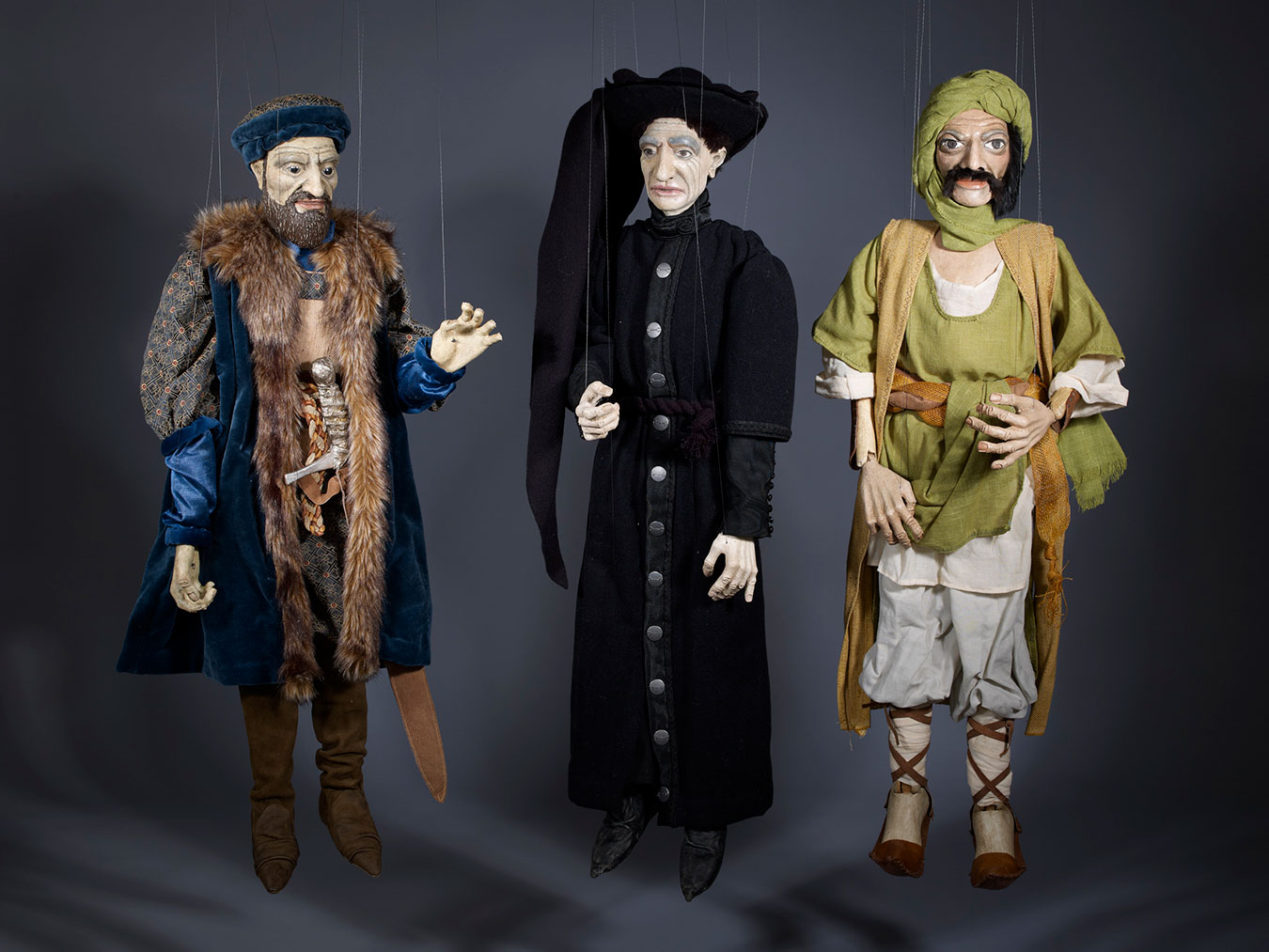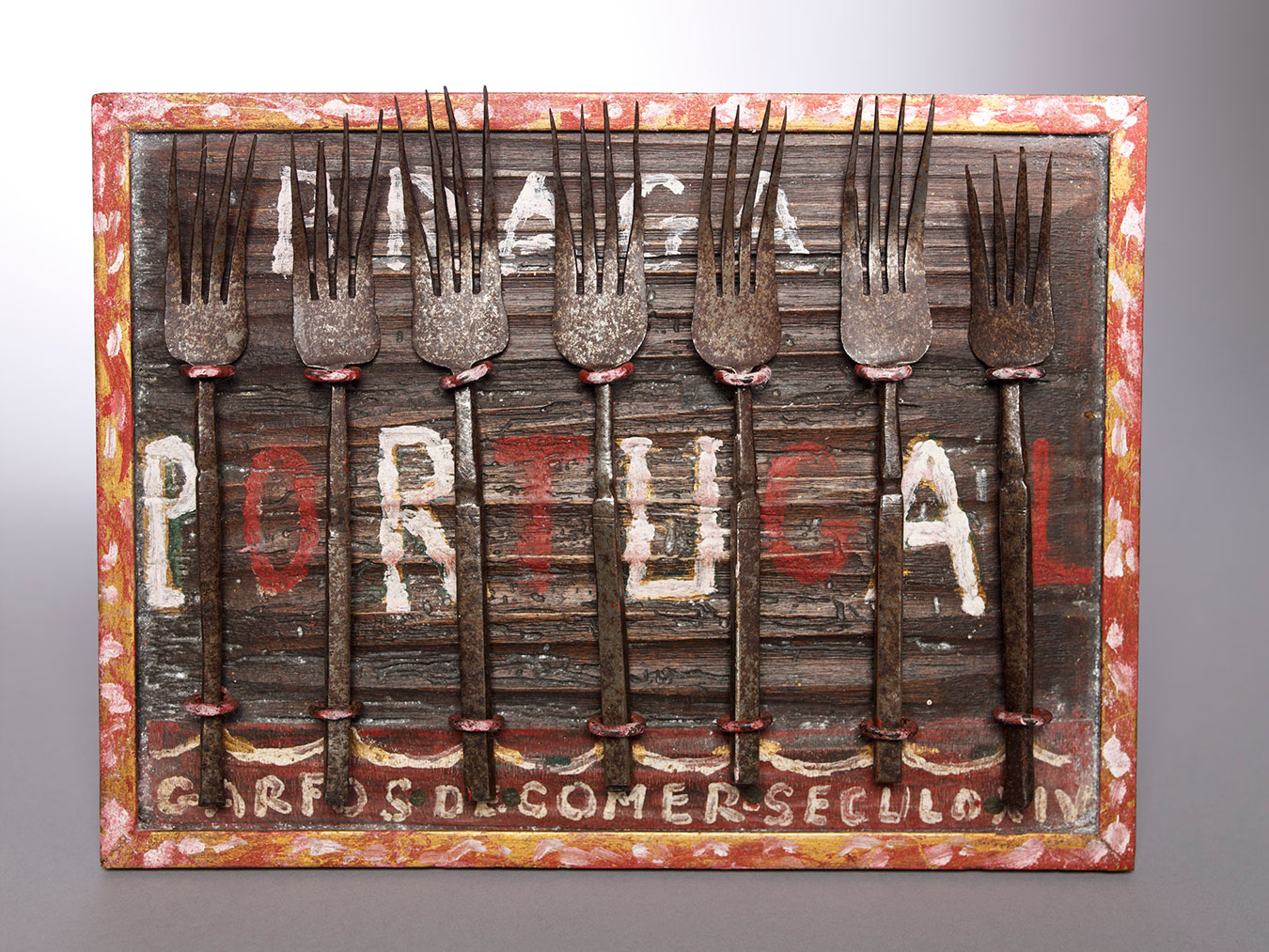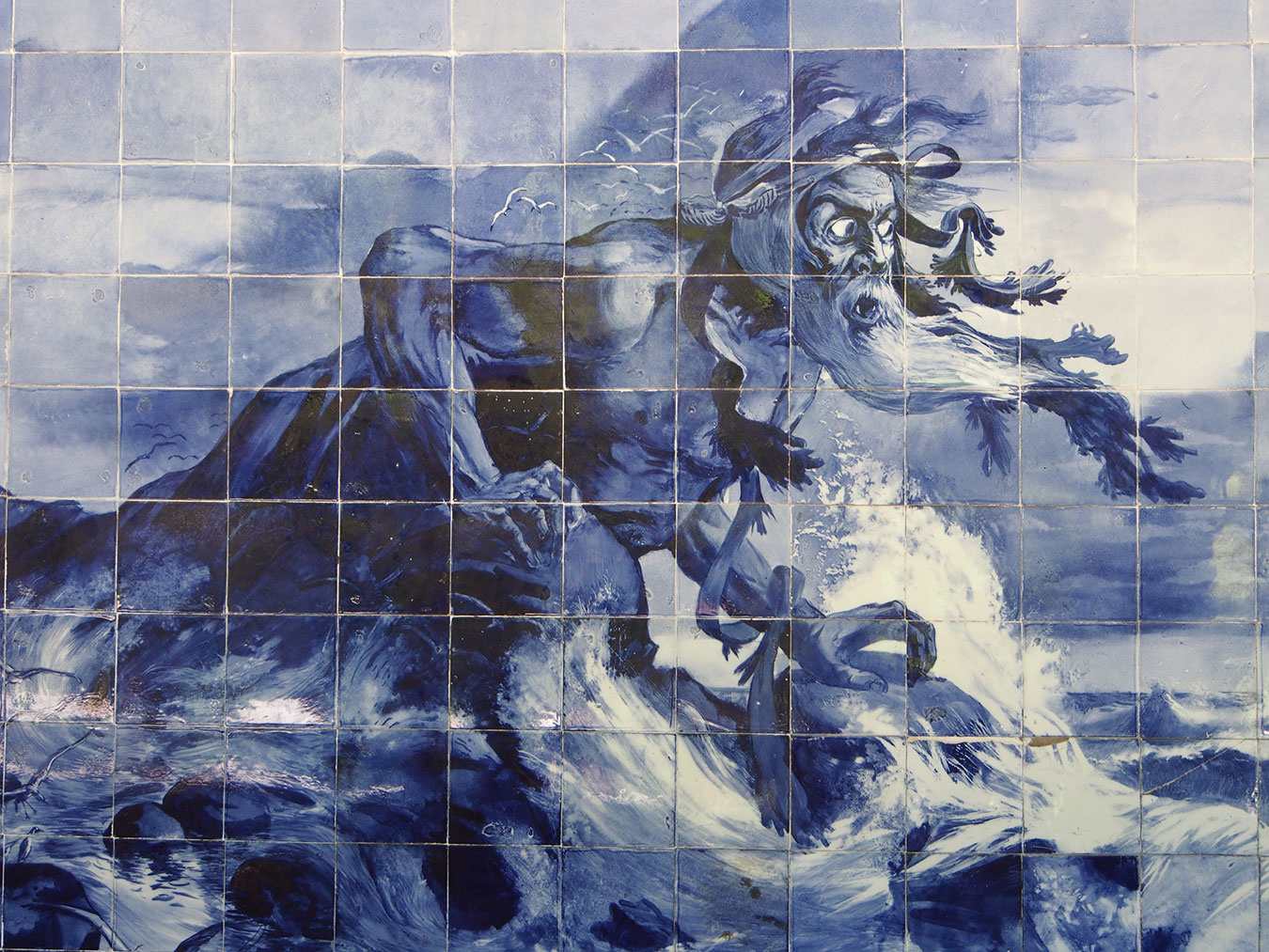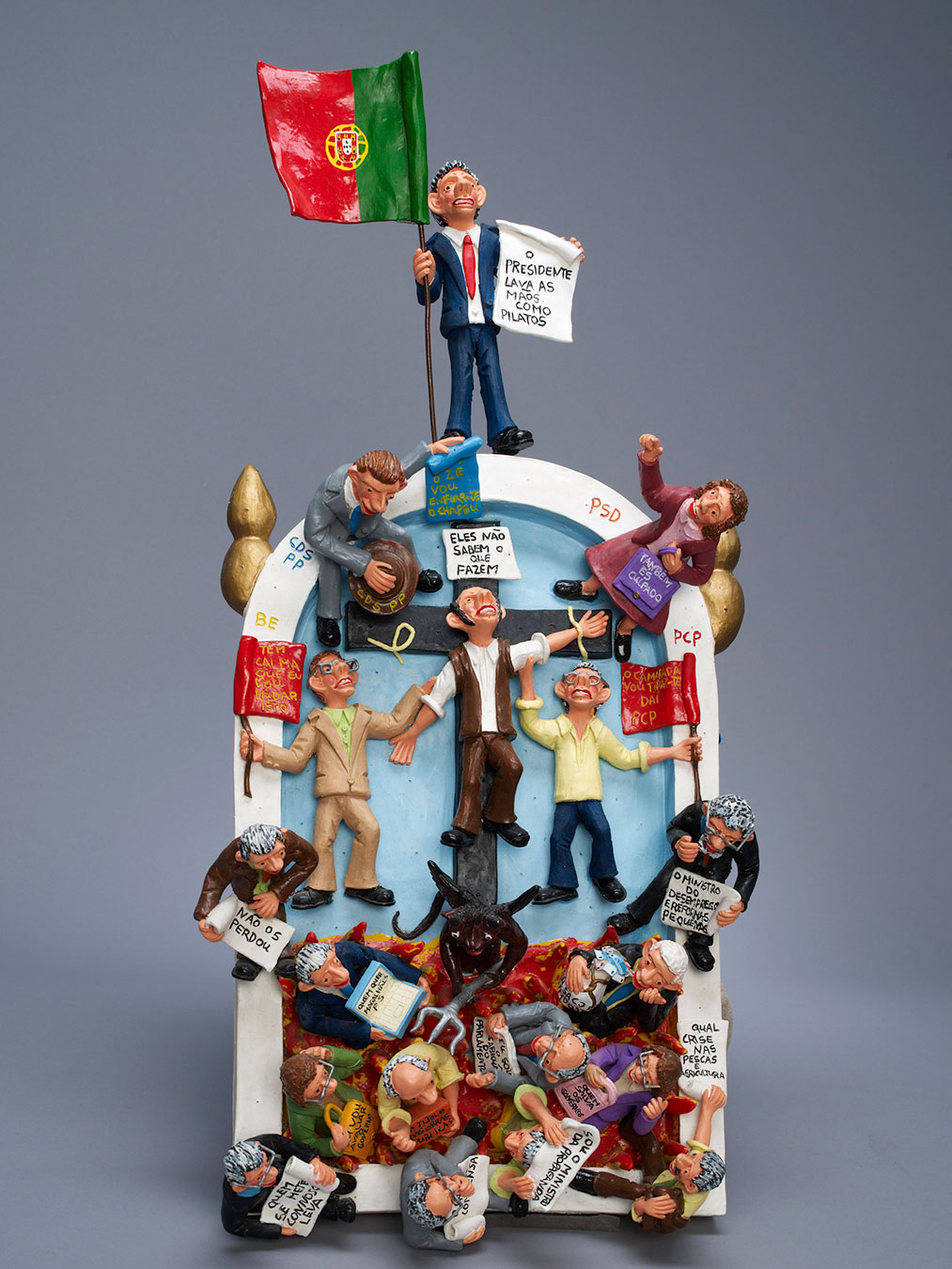“Europe is a piling up of history,” Dr. Anthony Shelton explains, “and here we are presenting another angle.” Shelton is referencing the Museum of Anthropology’s newest exhibit, “Heaven, Hell, and Somewhere In Between: Portuguese Popular Art”, his most recent curation. The project was started with modest intentions, meant to take up a month during his year-long sabbatical in Portugal. But Shelton quickly discovered that Portuguese folk art has many stories to tell, and the project burgeoned into a five-year journey of research, travel, and curation.
The exhibit explores three areas: heaven and its saints, hell and its tricksters, and Portugal, the place somewhere in between. The division came naturally, as Portuguese art is entrenched in religious themes, and is also deeply political, a subject frequently interwoven with religion. In hell, for example, “we have a projection of the stock exchange in 2009 with all prices falling as the economy goes into recession.” Suspended devil costumes, human-sized, dangle from the ceiling above; the experience is immersive.
With a selection of works ranging from hand-carved masks, to immaculate marionettes, to large crucifixion sculptures, the exhibit is remarkably diverse— rightly so, as its purpose is to show the complexity of Europe. “[One] reason for doing the exhibit was to challenge people’s stereotypes of what Europe is,” says Shelton. “[And to mix] traditional art forms that you might associate with indigenous people with a modern society.”
Unlike any other folk art exhibition in North America, “Heaven, Hell, and Somewhere In Between” challenges the space of the museum to encourage movement and excitability—aspects Shelton feels are necessary when showcasing folk art. The pieces are juxtaposed with massive sheets of metal, which were left outside all winter to rust, and projections covering four walls set the ambience for each section of the exhibit. The result is an exciting landscape, at once both haunting and beautiful. “The idea is to intrigue people so they read the text panels,” Shelton says. “I think that’s the job of a museum or a gallery: to intrigue initially … Everything is in the design.”
As with the exhibit’s curation, the emotions evoked from it are complex; there is humour in the sculptures of the jealous saints and friendly demons, irony in the political plaques, and charm in the monuments—all a true homage to Portugal’s colourful culture. Be patient with the pieces, Shelton encourages, and a story will emerge.
“Heaven, Hell, and Somewhere In Between: Portuguese Popular Art” runs May 12 to October 12, 2015 at the Museum of Anthropology.


